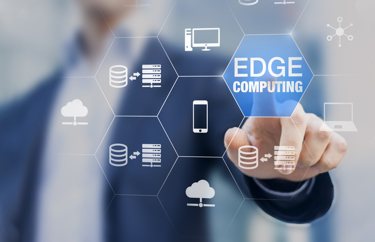Marty Johnstone, Senior Product Manager at RF Code, explains why leading retailers must have the IT infrastructure required to provide real-time, location-specific digital services to enable elevated customer experiences. You can read the full article in Retail Insights.
Being reticent regarding the promise of edge computing is no longer an option for the 21st-century retailer. Modern cybersecurity concerns, the use of in-store smart devices, and the customers’ need for a consistent omni-channel experience are pushing computing from a centralized data center to the outpost: the retail store itself. Retailers today must have the IT infrastructure required to provide real-time, location-specific digital services to enable elevated customer experiences.
In my previous career at the Chicago Mercantile Exchange, we could have used a sophisticated edge solution to manage our many global hubs -- a significant parallel to the retail industry.
Benefits Of Retailing At The Edge
Edge computing requires IT equipment close to the point of sale – servers, routers, gateways, and switches in closets or micro data centers -- to carry out mission-critical services. There are key components to edge computing in the retail environment:
- Point of sale devices (Cashless checkout stations, self-checkout kiosks)
- Real-time inventory reporting for demand forecasting, and dynamic pricing
- Geolocation advertising for localized offers
- Augmented or virtual reality experiences
- Smart technologies such as video displays, digital signs, and robot restockers
- Data analytics to capture customer information while in the store, from bar codes and checkout scanners.
Retail Challenges At The Edge
There are several challenges for retailers to consider when dealing with edge deployments in their store locations.
1) IT Management: Unlike a data center that is staffed and monitored 24/7, edge computing equipment is usually left on its own, without IT staff on-site or even physically close to the store. The store manager is often responsible for IT equipment uptime, but that is not their first description on their job title. And often the computing is overlooked until there is an issue, at which point the business suffers. To be an effective strategy, the person in charge needs to understand nuances such as the temperature of equipment -- something as simple as leaving a door open can let the cooling system out and burn the entire equipment to a crisp, shutting down retail operations for days.
2) Security: Edge locations are usually unsupervised and less secure than traditional data centers making it difficult to quickly discover and remediate issues. Among their proprietary software and sales and analytics data, edge equipment handles customers’ credit card data and personally identifiable information. Threats to the safety of that information come from both the environmental conditions of the location housing the edge equipment and a physical breach of doors and safety measures protecting the assets.
3) Location: Lastly, because retailers usually lease store locations, there is little consistency – each space, in each retail location, presents its issues in terms of managing IT equipment like power supply, air circulation, cooling, internet access, and bandwidth. Some locations may have dedicated space for servers and routers and other equipment, while others may have to use a broom closet or corner of their stockroom. In addition to the physical limitations of the various environments, store personnel are not trained IT staff. This makes it difficult to identify, diagnose, and fix problems in edge deployments quickly.
Capitalizing At The Edge
There’s no question that edge computing is creating new and improved ways for retailers to maximize operational efficiency and improve customer experiences. Just remember that this distributed retail environment requires a secure, manageable edge that can be deployed in remote locations without any on-site IT support. The only way to do that effectively is to have the ability to monitor each edge deployment from afar, back in the enterprise data center or headquarters facility. Edge facilities only bring that value when they’re working efficiently, effectively, and at capacity. This visibility changes the game and allows each store to focus on customer experience.



